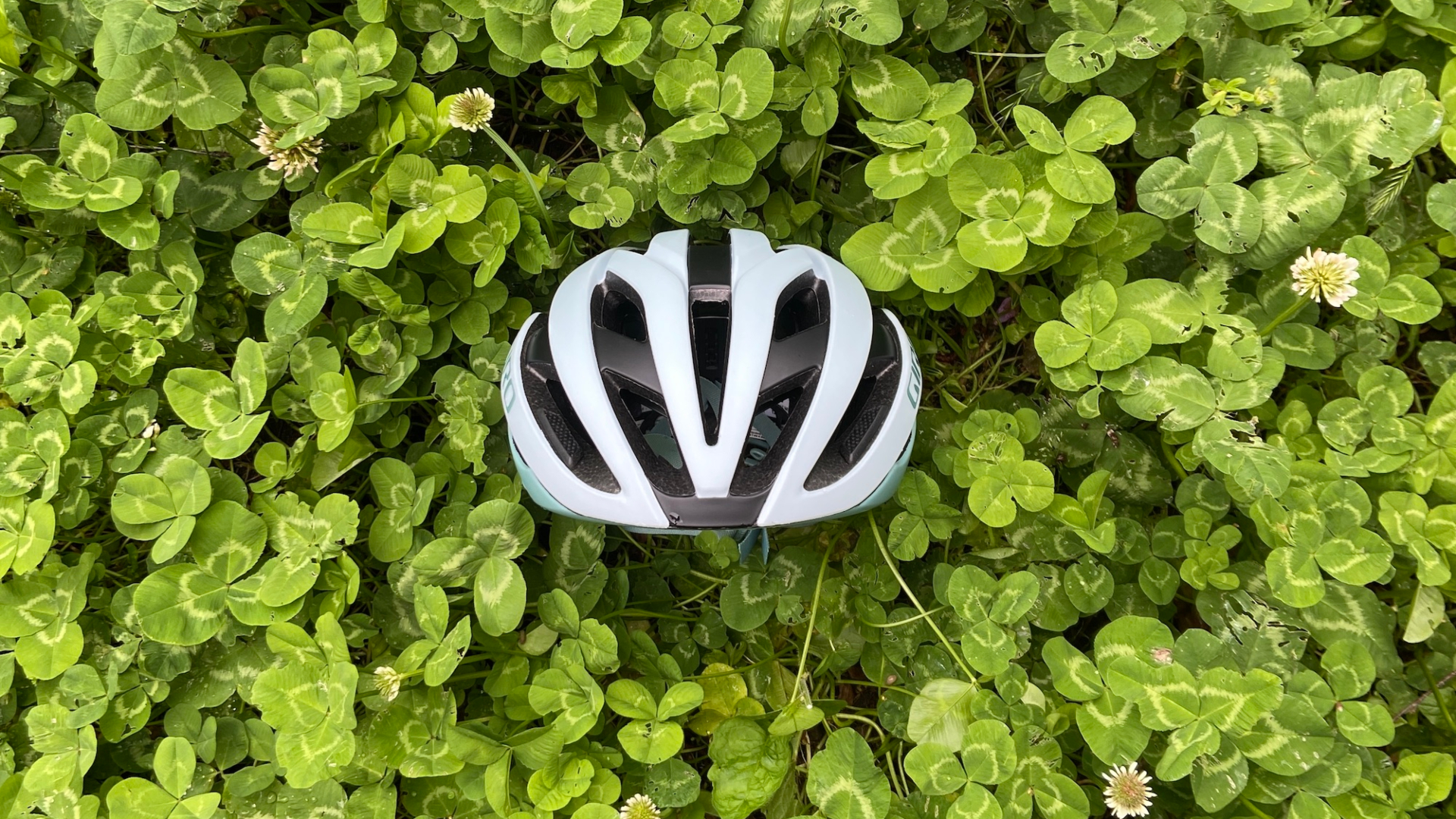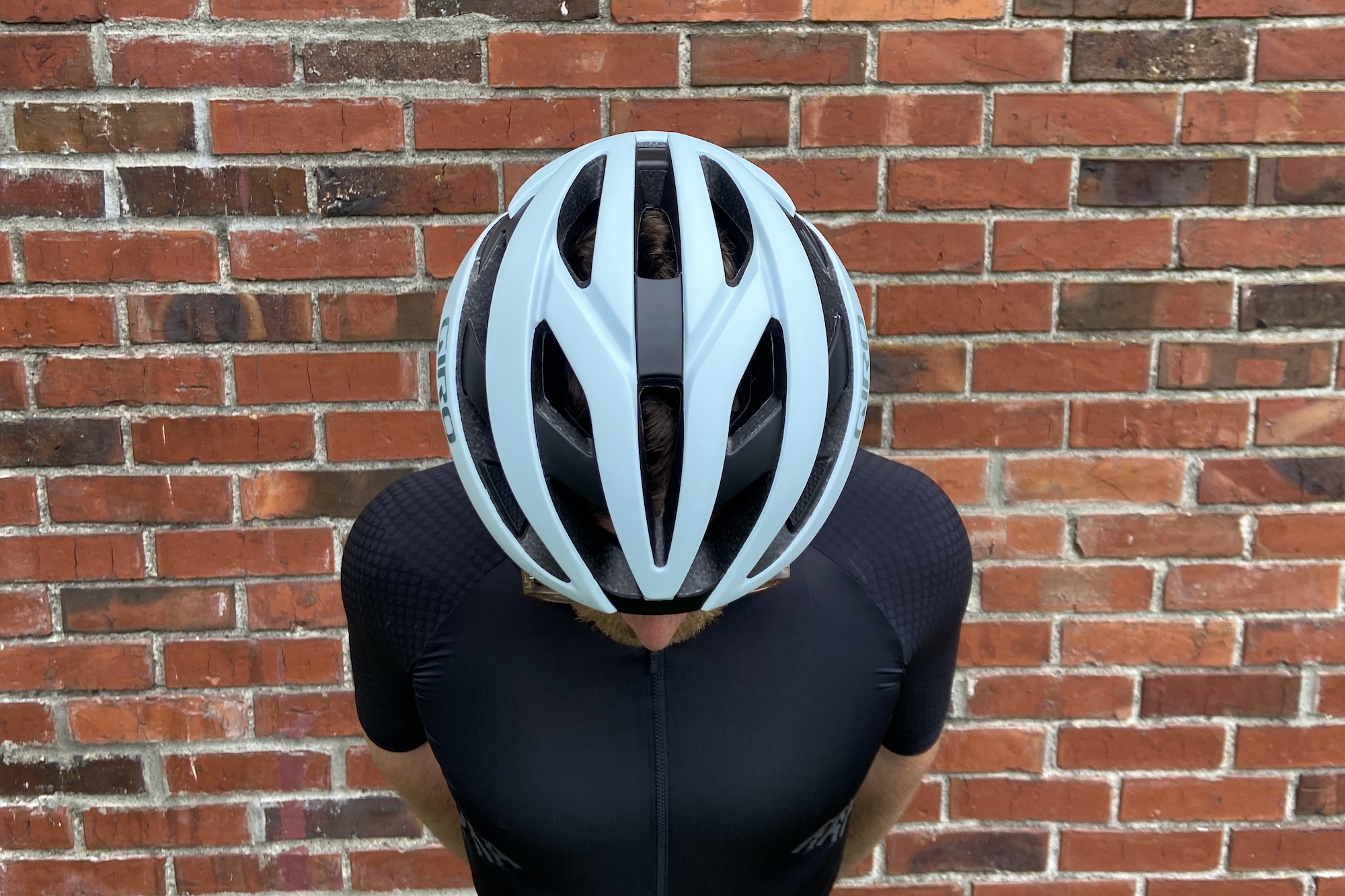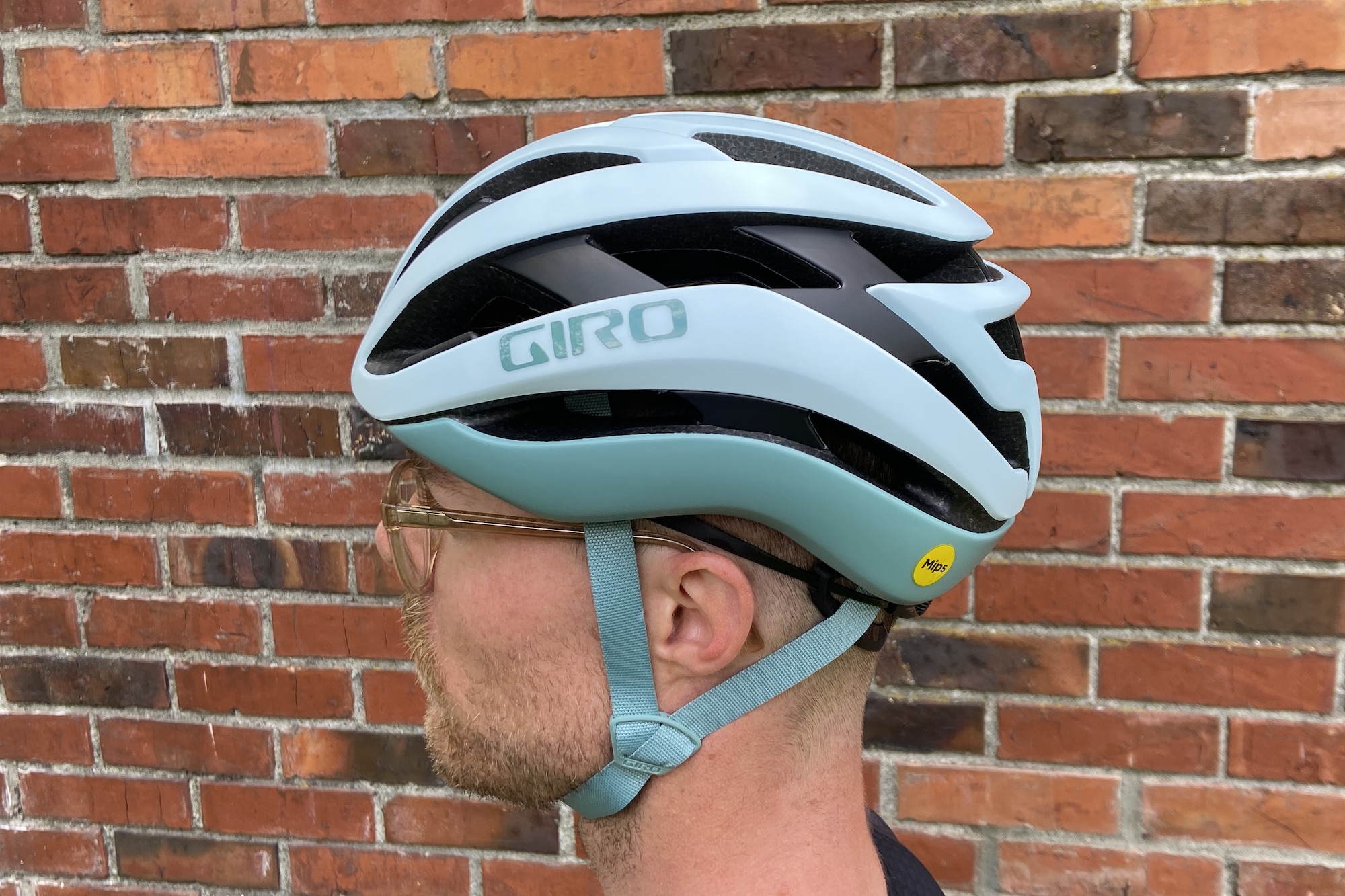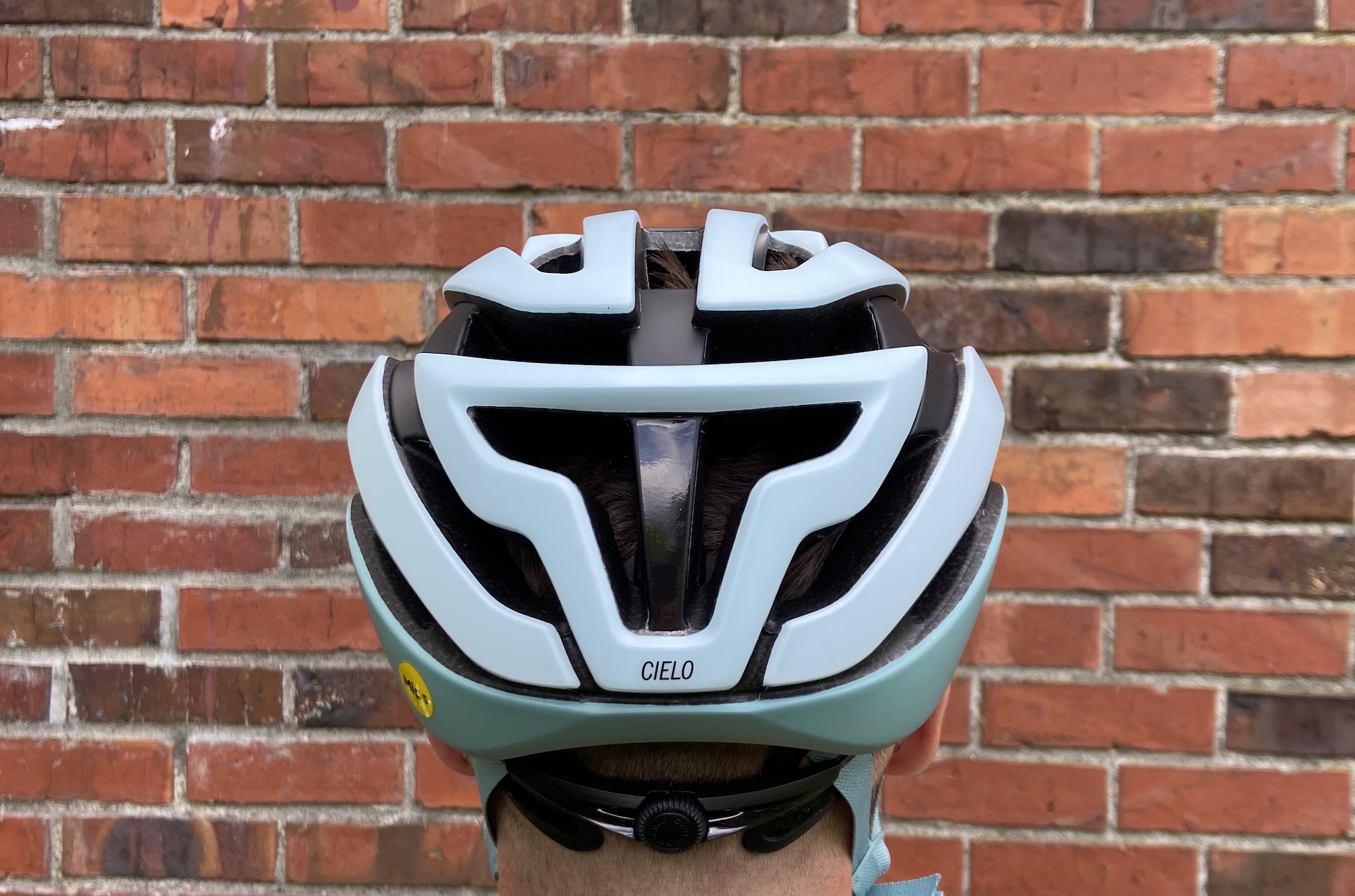
There are specific items of kit that seem to stick with certain professional riders. Geraint Thomas in Oakley sunnies, for instance, or Nairo Quintana in a Catlike Mixino. These pieces of equipment are emblematic of different eras in cycling, and they endure even when sponsorships change or riders retire.
The Giro Aeon was the helmet of choice for the Garmin-Cervelo pro team of the early 2010s (currently known as EF Education-EasyPost), and the shape of that helmet will remain forever linked to Thor Hushovd riding in the rainbow stripes of world champion.
One of Giro’s new helmets, the Cielo, takes its inspiration from the Aeon. For those of you who may not recall, the Aeon dates back to the late Armstrong era, characterised by scandal, glamour, and the very early beginnings of modern, data-driven cycling.
While this may not seem all that long ago, helmet technology has progressed considerably since then. The advent of rotational impact technologies, such as MIPS, have made helmets safer (though heavier) and aerodynamics have increasingly become important in helmet design. The Cielo may take its design cues from back then, but it is a thoroughly modern helmet in other ways.
Construction

The Cielo Mips slots into Giro’s road lineup as a mid-tier option. It doesn’t have the ball-and-socket-esque Spherical Tech included in Giro’s high-end helmets and is therefore less expensive. Giro bills it as an “enthusiast-level” helmet, and this is apt.
The Cielo has 22 vents and internal ventilation channelling and features a Mips Evolve Core liner. It uses a Roc Loc 5 Air retention system and padding contains silver particles to prevent odour. Like all helmets sold in North America, it complies with the US CPSC Safety Standard. It has yet to be tested by Virginia Tech’s independent testing lab, but other Giro helmets have historically done well under these protocols.
My test sample came in the Matte Light Mineral colour, and weighs, per my scale, 295 grams in size small. In the photos on Giro’s website, the Light Mineral appears to be off white, but it’s actually a light greenish-greyish. The shape is quite compact with a short overall length, but somewhat wide front profile—very much akin to the Aeon from all those years ago.
The Ride

First and foremost, fit is the most important part of a helmet. Giro helmets tend to fit an oval head shape best, and I’ve found that different models fit slightly differently. This is not a critique of Giro either—it’s the same with just about every helmet maker.
The padding is very comfortable across the forehead and the dial at the back is nicely sized and easy to use. I found that the straps sit very close to the head, which is helpful for both comfort and aerodynamics. It’s worth noting that Giro makes no specific claims regarding aerodynamics with this helmet, but then it’s not intended as a top-end race helmet either.
MIPS systems continue to improve: the first iterations were problematic for anyone with long hair, but they seem to have eliminated some of the catchy bits that caused the most issues. It still may snag in spots, however, so would certainly be worth trying on before buying.

I tested the Cielo in a range of weather conditions, from quite hot (for Seattle, that is) to pouring rain and was comfortable throughout. And there’s room for a casquette underneath if need be to stretch the temperature range somewhat. The Cielo had no interference with the few different models of sunglasses I tested. There are padded rubber spots in the front to create a sort of glasses garage when not being worn on the face.
The only significant shortcoming I encountered is on the scale—at 295 grams the Cielo is no lightweight. This is in contrast to the Aeon, which may be over a decade old but weighed significantly less. Most of this weight gain can be ascribed to the MIPS system that is now standard on most helmets. The internal harness, which allows the helmet to pivot around the head in the event of a crash, adds grams but increases safety outcomes. It’s a very reasonable trade. The Cielo can’t match top end helmets, but then it isn’t trying to.
Value and Verdict

At $199 / £165.00, the Cielo is considerably less expensive than Giro’s top-end Aries Spherical model, as worn by the Jumbo-Lease a Bike team. The question is whether or not it performs in line with its price. There are many good helmets on the market in the sub-$200 range, from the likes of Specialized, Bontrager, POC, Bell and more and they all pass the same safety tests. Usually, you pay more for less, in terms of weight, and the Cielo is comparable with others here.
At the end of the day, fit is paramount—a helmet can test well in a lab, but if it doesn’t fit your head well it won’t do its job properly. The Cielo does everything it ought to, while paying (subtle) homage to an iconic helmet of the past, and does so for a reasonable price.







